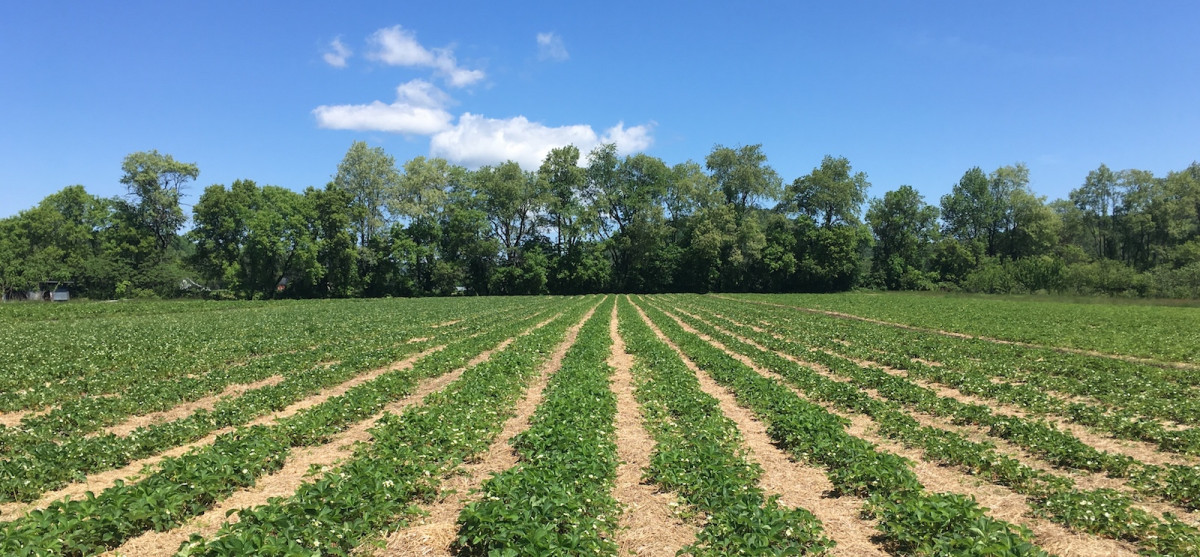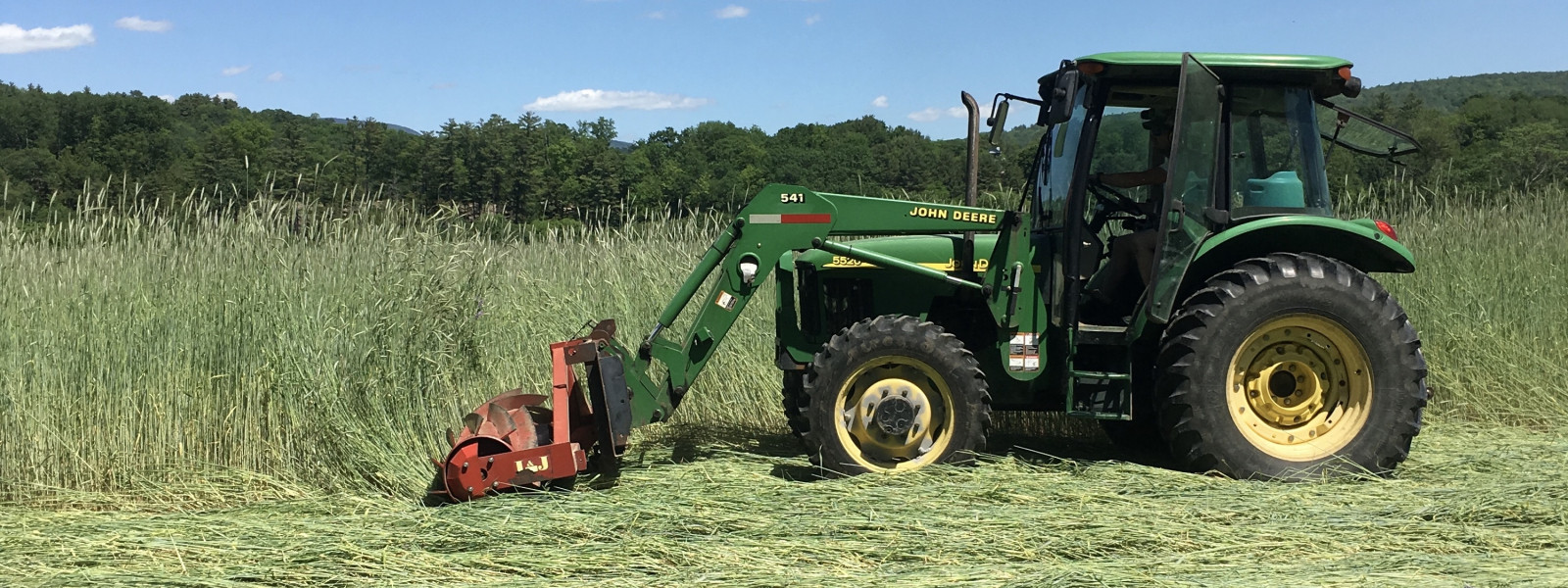This Week at the Farm: Bigger Harvests, Living Soil, A Strawberry Update

It’s seems as if we’ve been talking about needing sun and warmer weather for ages now. Well, they’re here, and the growing season is finally picking up. In the fields, you can see rows upon rows of greens, brassicas, alliums, etc. And some of the flowers are blooming in the cut flower garden – our first PYO wedding party of the season is coming to the farm to make flower arrangements next week.
In the fields where we pick quarts of strawberries for the farmstand, the berries are starting to blush. The pick-your-own field, planted last spring, is just blooming now; this means you’ll have to wait a bit longer for strawberry picking. We’re hopeful that the berries will be ready soon!
This past week, our kitchen crew used up the last of the preserved strawberries from our 2018 harvest for yogurts and weekend treats. This weekend they’ll be making banana chocolate tea cakes, yogurts (rhubarb and plum), asparagus quiche, and traditional and black bean hummus, in addition to the usual offerings.
Skip to the bottom for SALES and garden tips from our Annuals & Perennials staff!
Update from the fields
We did our first big harvest and full day (!) of washing, trimming, sorting, and packing on Wednesday. From here on out, we should have a steady flow of delicious produce in the farmstand. Side note: If you haven’t had your fill of asparagus yet, make sure to get it while you can! It’ll be winding down this coming week.
The field crew is picking up the pace; on top of harvesting, they’re also keeping up with weeding and planting an endless list of veggies: field peppers, tomatoes, eggplant, zucchini, cucumbers, scallions, napa cabbage, and the list goes on.
From the R&D fields
It was an exciting week for our R&D team – they were able to plant no-till broccoli and 3 varieties of kale, and the no-till strawberries are blossoming and starting to fruit. Stay tuned for updates on other no-till projects, including transitioning a field on the home farm.
Learning about nutrition
As a follow up to a previous lesson about soil nutrition, our homeschool class covered human nutrition this week. They learned about the nutrients our bodies need and what they do for us. With the help of a relay race led by Emma, our Lead Educator, the students identified which types of food belong in which food group (fruits and vegetables, grains, protein, and dairy) and what percentage of our daily intake of each should be.
The class rounded out the afternoon with some fresh spring rolls with carrots, cucumbers, cilantro, and a squeeze of lime juice, all wrapped in rice paper, and a gluten-free soy sauce for dipping. These rolls are super simple and especially great in the summer – here’s a link to a basic recipe. The great thing about them is that pretty much anything goes, and you can use whatever is ready for picking in the garden!
Healthy Soils are Full of Life
Soil is made up of mostly minerals, water, and air, and about 5% is organic matter – living, newly dead, and long dead. Only about 0.5% of the soil is actually living, but that very small percentage contains millions of species and billions of organisms that hold and release water, store and recycle plant nutrients, and build the soil and give it structure. Minimizing soil disturbance (tillage) cycles microorganisms back to plants and allows them to grow and flourish.
Learn more from the USDA’s Natural Resources Conservation Service →
Gardening Tips: Drought tolerant plants
In an ideal world, your plants will get an adequate amount of water and your soil will be healthy enough to hold it. If you’re dealing with poor soil and/or a lack of rain, you may consider choosing “drought tolerant” plants for your garden.
Drought tolerant plants can survive and even thrive in environments with minimal water or rainfall. Plants like succulents, begonias, and portulaca have fleshy leaves that store water. Others like gaillardia, yarrow, and verbena have developed strong root systems which absorb large amounts of water. Some plants even have small hairs on their leaves that capture water from the air and reduce evaporation. It’s important to note that these plants need to become established before going long periods of time without water.
You can find more tips like this in our little “garden information center” outside the farmstand, near the perennials. We even have handouts for you to take home!
All spring bulbs are 30% off through Monday! This weekend is your last chance to get bulbs (dahlias, freesia, gladiolus, etc.). On Tuesday, we’re pulling any leftover bulbs from the farmstand and planting them in the cut flower garden for you to enjoy as flowers later in the season.
See you at the farm!
–From all of us at Cedar Circle
Upcoming
June 8 – Norwich Farmers Market, 9-1.
June 9 – Knife sharpening at the farmstand, 10-2.
June 11 – Little Farmers drop in class for children ages 2-5, 10-11 am.
June 11 – Cooking for Middle Schoolers, 3:30-5:15 pm.
June 12 – Homeschool Farm Science, 1-3 pm.
June 13 – Lebanon Farmers Market, 4-7 pm.







